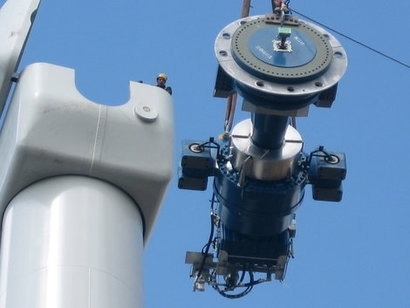
The supply chains in the wind sector for minerals, components and key enabling infrastructure like ports and platforms are not fit-for-purpose for a net zero world, where today’s global installed wind fleet must scale up by roughly three times by the end of the decade.
Solutions exist, but require stronger collaboration between government and industry, as well as among supply chain actors themselves, according to a new report “Mission Critical: Building the global wind energy supply chain for a 1.5°C world” from the Global Wind Energy Council, in partnership with Boston Consulting Group. The report assesses the implications for energy transition policy across four future macroeconomic scenarios by 2030, and how broader global developments like rising inflation and open-door trade versus increased trade barriers will impact the wind supply chain landscape, market size and sustainability of industry returns.
The first-of-its-kind comprehensive analysis across key components and materials in the sector finds that the wind supply chain is highly globalised, with a strong focus in China for rare earth element refining and component manufacturing in particular. A resetting of political priorities towards industrial resilience and security in many areas of the world, including Europe and the US, in addition to increasing market volatility, poses risks for creating a competitive and sufficiently scaled-up global supply chain. Policy and regulatory issues around permitting, grids, investment certainty and localisation are also holding back volume in the wind pipeline, which could otherwise send positive demand signals for supply chains to scale.
“This is a watershed moment for getting trade and industrial policy in shape for a 1.5°C world” said Ben Backwell, Global Wind Energy Council CEO. “Wind energy will form the backbone of the future energy system based on renewables, but in order to enable a tripling of the world’s wind installations by 2030 we require a globalised, secure and competitive supply chain. Governments must work with the industry - and the industry must work together - to ensure the sector meets the enormous demand for clean and secure energy within this decade. Investment in supply chains has seen setbacks in many regions of the world, largely caused by challenges in policy, regulation and market design while industry itself needs to step up to the climate emergency by embracing standardisation with more global and modular technology design. Everyone has a role to play in this mission to create stronger and more resilient supply chains for the energy transition.”
The report explores the impact of four different macroeconomic scenarios, and how the wind industry can best navigate uncertainty and change in the global market. An ‘Open Door’ approach would yield the highest net-positive impact in wind growth to reach climate goals, but the report anticipates the ‘Increased Barriers’ scenario as the most likely to materialise in this decade.
An Open Door scenario with growing regional collaboration on both supply and demand.
An Increased Barriers scenario where markets increase trade barriers and turn attention towards domestic investment.
Economic Downturn where investments dry up and attention focuses towards low-cost rather than low-emission technology.
Global Escalation where increasing cross-border conflict reduces trade and shifts energy focus from decarbonisation towards availability.
The report also outlines six key action areas that would set the conditions for large-scale wind supply chain growth and security:
Address basic barriers to wind industry growth in land, grids and permitting to increase volume and predictability
The wind industry must standardise and industrialise
Regionalisation will be needed to support growth and resilience, while maintaining a globalised supply chain
The market must provide clear and bankable demand signals
Fundamental reform of the power market reform underpins further wind growth
Through a coordinated global effort from industry and policymakers, challenges in the global wind supply chain can be resolved over the course of this decade. Actions taken now in these six areas will help to foster a highly resilient and cost-efficient wind industry to decarbonise the world.
For additional information:

